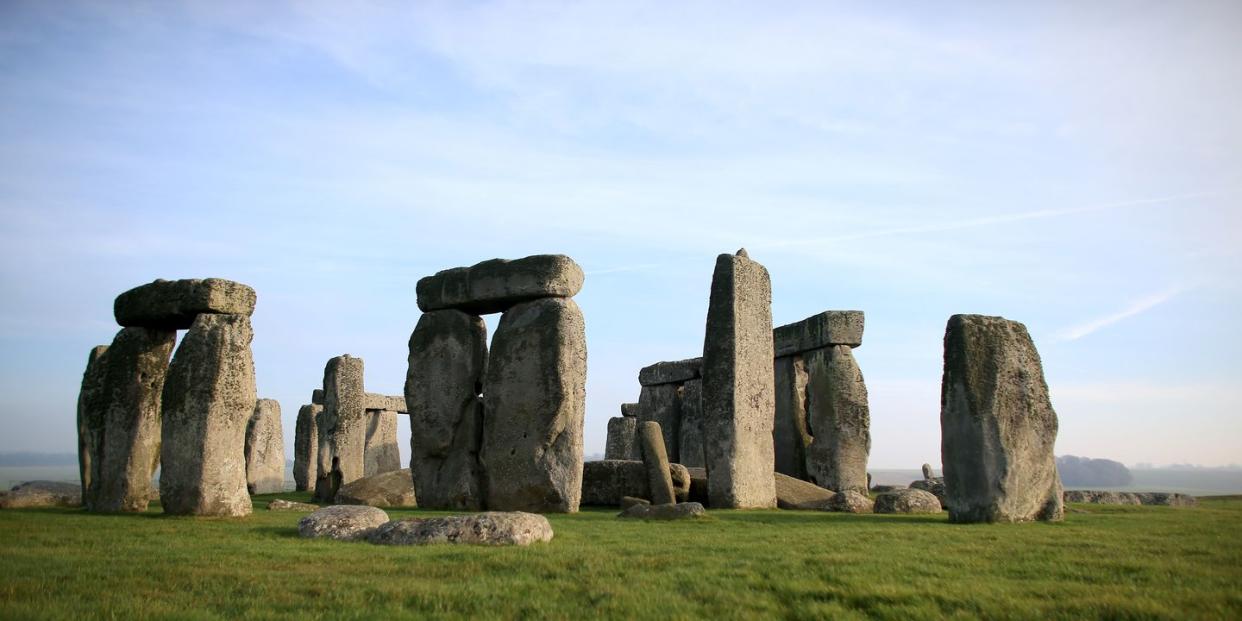Scientists Shoot Down a Popular Theory About the Mystifying Stonehenge

For years, archaeologists have explored the possible purposes of the neolithic monument known as Stonehenge.
While its ability to mark the seasons is well understood, some experts have argued that Stonehenge could be a kind of ancient solar calendar.
A new study argues against this hypothesis, stating that it doesn't stand up to scrutiny in relation to astronomical or historical evidence.
Stonehenge, an ancient neolithic monument located on the Salisbury Plain in England, is one of the biggest mysteries in archaeology. No one knows for sure who built the famous circle of stones or for what purpose. On that last point, most archaeologists agree that Stonehenge—at the very least—marks the changing of the seasons, as certain stones appear perfectly aligned with the sun on solstices and equinoxes.
In 2022, one group of scientists took this impressive display of archaeoastronomy a step further and argued that Stonehenge was actually a 365-day calendar. The idea was that the 30 sarsen lintels (cross beams) on the outer edge of the monument represented the 30 days in each month, and with the addition of five structures in the Trilithon Horseshoe (located at the center) along with four “station stones” (for leap years), completed the surprisingly modern 365-day calendar.
This idea would transform our historical understanding of when humans devised solar calendars, a discovery often attributed to the ancient Egyptians, rather than relying on inaccurate lunar-based ones.
In other words, big ... if true.
However, not all archaeologists are convinced of the ancient monument’s calendrical accuracy. A new study published in the journal Antiquity argues that the theory of Stonehenge as a solar calendar is based “on a series of forced interpretations of the astronomical connections of the monument, as well as on debatable numerology and unsupported analogies.”
Juan Antonio Belmonte from Spain’s University of La Laguna and Giulio Magli from Polytechnic University of Milan argue against this theory along three major points. The first is basic astronomy: Simply put, Stonehenge’s neolithic architects would have no way of precisely accounting for the subtle change in the sun’s daily position (which accounts to one-tenth of a degree) using massive stones. While the monument does reflect some interest in the solar cycle, Belmonte and Magli argue that it’s likely to anchor lunar events rather than explicitly counting the days.
The second is a common aspect of archaeology known as "numerology," which is the ability to find important numbers from ancient sources if you look hard enough. While the sarsen lintels, along with the additional stones located at Stonehenge’s interior, could theoretically add up to 365 days, there is no indication within the monument itself that they account for 12 months within a year.
“In this case, a ‘key number’ of the alleged calendar, 12, is not recognizable anywhere,” a press release from the Polytechnic University of Milan states. “The theory suffers also from the so-called ‘selection effect,’ a procedure in which only the elements favorable to a desired interpretation are extracted from the material records.”
The final issue is one of simple history, as Egyptians didn’t even begin to account for a leap day until 2,000 years after Stonehenge. This implies that architects of Stonehenge would have needed to work out this detail for themselves while also somehow learning of Egypt’s solar calendar, which no archaeological evidence supports.
The true nature and purpose of Stonehenge remains a mystery, but archaeologists can be reasonably confident crossing out things that this fascinating monument is decidedly not.
You Might Also Like


